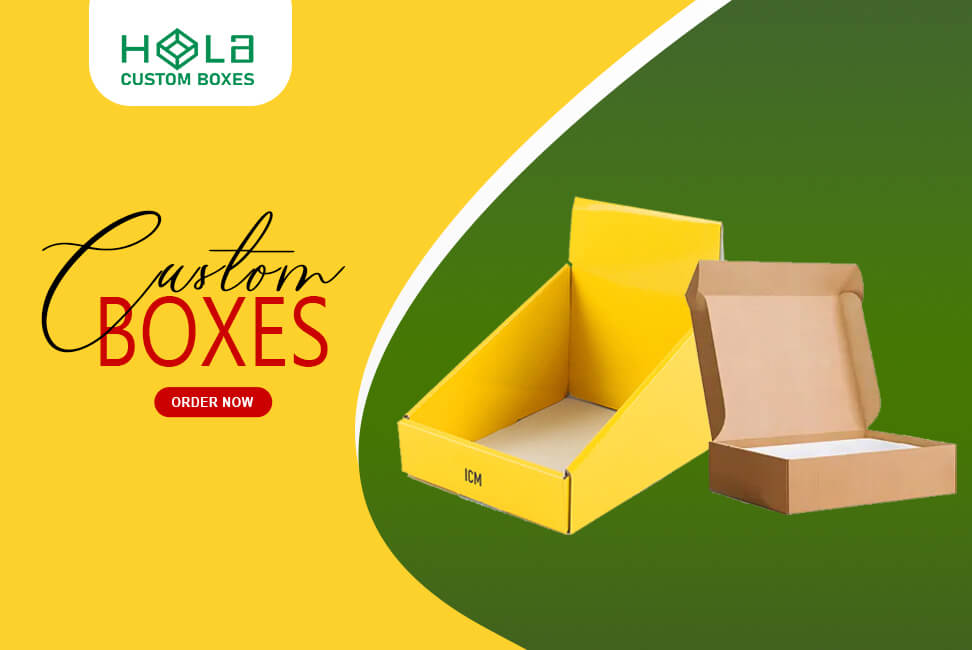
Guide to Sourcing Custom Corrugated Box Materials
Custom corrugated boxes are the unsung heroes of protection and presentation when it comes to packaging. In this guide, you’ll navigate the intricate world of sourcing custom corrugated box materials, ensuring your products are securely packaged and well-presented.
From understanding different material types to finding reliable suppliers and assessing quality standards, you’ll gain the knowledge needed to make informed decisions.
Cost considerations and logistics will also be covered, helping you streamline your sourcing process.
Whether you’re a small business or a large corporation, this guide will empower you to make the best choices for your custom corrugated box materials.
Key Takeaways
- Consider specific packaging requirements and choose the appropriate corrugated board grade and flute option.
- Look for reliable custom box material suppliers with a proven track record, necessary certifications, and the ability to provide customized solutions.
- Assess the quality standards of custom box materials by scrutinizing certifications, specifications, production processes, and adherence to recognized quality assurance standards.
- Consider the cost considerations of custom box materials by comparing quotes, evaluating strength, durability, eco-friendliness, and recyclability, and building strong relationships with suppliers.
Understanding Custom Corrugated Box Material Types
To understand custom corrugated box material types, you need to consider the specific requirements of your packaging needs. Corrugated board grades and flute options are crucial factors to consider when choosing the right material for your custom boxes.
Corrugated board grades refer to the strength and durability of the material, with options ranging from the lightweight E flute to the heavy-duty double-wall BC flute. The flute options, including A, B, C, E, and F flutes, offer different levels of cushioning and stacking strength.
Understanding these grades and flute options will help you select the most suitable material for your packaging needs.
When considering corrugated board grades, think about the weight and fragility of your products. For heavy or delicate items, a higher grade, such as BC flute, provides better protection during shipping and handling. Conversely, lighter products may be adequately protected with a lower grade, such as E flute.
Similarly, the flute options impact stacking strength and cushioning, so choose a flute size that aligns with your stacking and protection requirements.
Finding Reliable Custom Box Material Suppliers
When sourcing custom corrugated box materials, you should start by researching reliable suppliers. Finding the right material supplier is crucial to ensure the quality and timely delivery of your custom box materials. Here are three key factors to consider when looking for reliable custom box material suppliers:
1. Material Supplier Qualifications: Look for suppliers with a proven track record of providing high-quality custom box materials. Check if they have the necessary certifications, such as ISO standards, to ensure that they meet industry quality requirements. Consider their experience in the corrugated box industry and their ability to provide customized solutions to meet your specific needs.
2. Material Supplier Communication: Effective communication is essential when working with custom box material suppliers. Choose suppliers who are responsive to your inquiries, provide clear and detailed information about their products, and are willing to collaborate in developing custom solutions. Good communication ensures that your requirements are understood and met, leading to a smoother and more successful partnership.
3. Reliability and Consistency: Seek out suppliers who have a reputation for reliability and consistency in delivering custom box materials. Look for reviews and testimonials from other businesses to gauge their performance and reliability. A reliable supplier will help you meet your production schedules and maintain consistent quality standards for your corrugated box products.
Assessing Custom Box Material Quality Standards
Assess custom box material quality standards by scrutinizing suppliers’ certifications, material specifications, and production processes. Look for suppliers who adhere to recognized quality assurance standards such as ISO 9001. These certifications indicate that the supplier has established quality management systems to consistently meet customer and regulatory requirements.
Delve into the material specifications provided by the supplier. Ensure that the materials meet industry standards and are suitable for your specific packaging needs.
Material testing is a crucial aspect of assessing custom box material quality standards. Inquire about the supplier’s material testing procedures and ask for documentation to support the quality of their materials. This may include results from compression tests, burst strength tests, or edge crush tests. The supplier should be able to provide evidence of rigorous testing to ensure that the materials meet required performance standards.
It’s essential to understand the supplier’s production processes when evaluating custom box material quality standards. Seek suppliers who are transparent about their manufacturing processes and quality control measures. This includes inspecting the production facility, ensuring adherence to safety and environmental regulations, and verifying that the supplier has a robust quality control system in place.
Custom Corrugated Box Material Cost Considerations
Consider evaluating the cost implications of custom box materials by examining your budget constraints and comparing quotes from multiple suppliers. It’s essential to carefully consider the cost implications, when it comes to sourcing materials for your custom corrugated boxes. Here are some key points to keep in mind during the material sourcing and cost analysis process:
1. Material sourcing: Look for suppliers that offer a range of options for corrugated box materials. Consider factors such as the strength and durability of the materials, as well as their eco-friendliness and recyclability. By sourcing materials from reliable suppliers, you can ensure the quality and consistency of your custom boxes.
2. Cost analysis: Compare quotes from multiple suppliers to find the most cost-effective options for your custom corrugated boxes. Keep in mind that the cheapest option may not always be the most economical in the long run, especially if it compromises the quality of the boxes. Factor in the overall value and reliability of the supplier when analyzing costs.
3. Supplier relationships: Building strong relationships with material suppliers can lead to better pricing and more favorable terms. Establishing a rapport with your suppliers can also result in improved communication and a better understanding of your specific material needs.
Custom Box Material Ordering and Logistics
Once you have identified the most suitable custom corrugated box materials, it’s important to efficiently manage the ordering and logistics process. It’s crucial to ensure that you have all the necessary specifications and quantities ready before placing your order.
This will help to streamline the process and avoid any delays in production. Additionally, it’s advisable to communicate closely with your supplier to confirm lead times and delivery schedules, ensuring that the materials will be available when needed.
Take into account the size and weight of the materials when considering shipping options, as well as the distance they need to travel. This will help you determine the most cost-effective and efficient shipping method.
Some suppliers may offer different shipping options, including standard ground shipping, expedited shipping, or even the option to use your own preferred carrier. Evaluating these options will allow you to make an informed decision based on your specific requirements.
| Ordering Process | Shipping Options |
|---|---|
| Prepare specifications | Consider size and weight |
| Confirm quantities | Evaluate distance |
| Communicate with supplier | Explore various shipping methods |
Conclusion
Now that you understand the different types of custom corrugated box materials, how to find reliable suppliers, and assess quality standards, you can make informed decisions for your packaging needs.
Consider cost considerations and logistics when ordering your custom box materials. By following this guide, you’ll be able to source the right materials for your packaging requirements and ensure the safe and secure transportation of your products.



